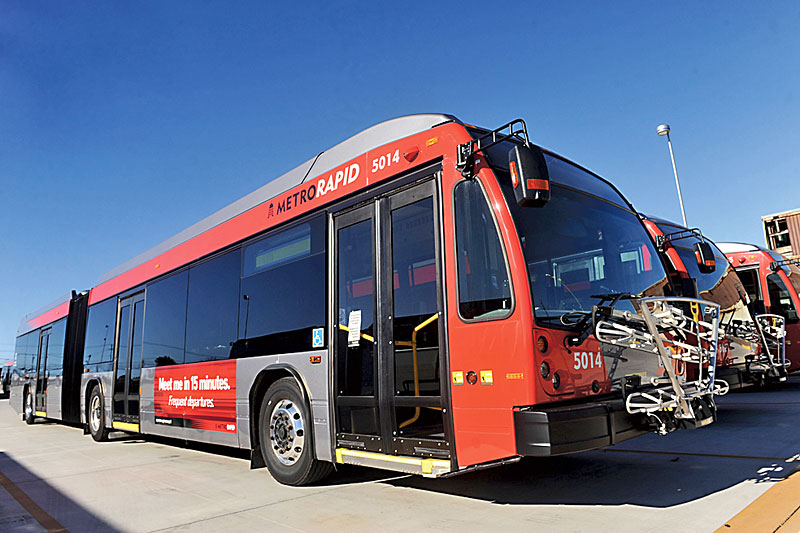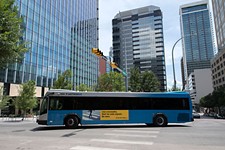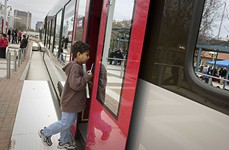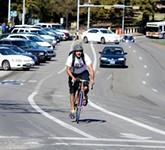Rising Ridership
Numbers following the June ReMap: going up
By Jack Craver, Fri., Sept. 7, 2018
Cap Metro has something to brag about. New monthly ridership figures suggest that the agency's route overhaul has more people riding the bus. According to authority data, ridership increased by 2.8% this June, when Cap ReMap went into effect, over the previous June's monthly tally. Ridership in July jumped 5.9% from the previous July, a stark reversal of the negative trend that appeared during the first half of 2018, when ridership was down every month compared to last year.
Cap ReMap went into effect on June 7, providing 14 "frequent" routes with service every 15 minutes during peak hours, seven days a week. Previously, there were only six frequent routes, none of which provided 15-minute intervals of service on weekends. The changes amount to a significant increase in service, but there were some routes that were changed and stops that were eliminated, leaving certain areas of the city with arguably worse access to transit now than before.
Cap Metro is reluctant to divulge the ridership figures for individual routes. Planning and Development Executive Vice President Todd Hemingson says he wants to keep the emphasis on the systemwide impact, which he still believes cannot be properly evaluated for a few more months. But while Cap Metro's monthly reports don't provide ridership data for each route, they do provide data for different types of transit service. By far, the largest increases in ridership have come on the two MetroRapid routes: the 801 and the 803 buses that travel the Lamar/Guadalupe/South Congress corridors. In July, MetroRapid ridership was up 40.7% over last year, totaling 387,000 boardings. Ridership on the regular fixed routes was only up 0.4%, at 1.68 million boardings.
MetroRapid ridership had been steadily increasing long before Cap ReMap, and can be attributed in part to a series of changes that have been made over the last 18 months. In January of 2017, fares on the two routes were lowered from $1.75 to $1.25 to match other bus routes. (The "premium fare" had proved particularly troublesome because it meant that people could not transfer from other buses onto the rapid routes without buying a new ticket. Asked whether the premium fare proved an unmitigated disaster, Hemingson replied, "Let's just say that there was disagreement when that decision was made internally.") Other improvements included boosting weekday frequency to every 10 minutes during peak hours, and extending frequent service to weekends. "When it's that frequent," says Hemingson, "people begin to see how useful it is."
ReMap's greatest effect may have been in halting the precipitous decline in ridership on the regular fixed routes. In May, fixed route ridership was down 6.6% over the previous year, and swayed between 5.3% and 10.7% down during the first four months of the year. The 2% decline in June and 0.4% gain in July indicates that things are trending up.
Skeptics highlight two potentially significant caveats. This summer, for the first time ever, Cap Metro is offering free rides to all K-12 students. Hemingson counted about 100,000 student rides in June and 120,000 in July. It's not clear how many of those kids are only riding the bus because it's free, and there is no student-specific data from prior years to compare it to.
Another potential issue is that the increase in overall boardings may be partially due to more passengers taking trips that involve transfers, as a result of route changes. Cap Metro has acknowledged that more people will take multiple-bus trips under the new system, but believes that the more logical grid-like design coupled with greater frequency will make those transfers less of a headache than in the past.
See Capital Metro’s monthly ridership reports at www.capmetro.org/facts.
Got something to say on the subject? Send a letter to the editor.











